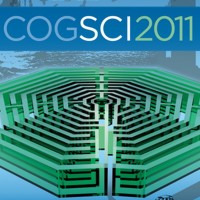- Home
- »
- Meetings
- »
- Cognitive Science Society
- »
- CogSci 2011
- »
- Panel 2
Panel 2
with Madeleine Keehner, Neil Burgess, and Mary Hegarty
| July 23, 2011 | |
| 39 minutes | |
| Madeleine Keehner, Neil Burgess, Mary Hegarty | |
Madeleine Keehner is a faculty member at the University of Dundee, Scotland, UK and the Director of the Spatial Cognition Lab. Her research interests include: individual differences in spatial abilities; neural and behavioral bases of mental spatial transformations; spatial thinking in medicine, especially surgery and dentistry; and visuospatial working memory processes in sign language and Human-computer interaction, especially interactive 3D visualizations.
Neil Burgess is a Professor and the Deputy Director of the Institute of Cognitive Neuroscience at University College London. His current research interests include investigation of the role of the hippocampus in spatial navigation and episodic memory; computational modeling and electrophysiological analysis of the function of hippocampal neurons in the rat; functional imaging of human navigation, and neuropsychological experiments on spatial and episodic memory. He also explores human short-term memory, computational modeling, functional imaging and psychological experiments.
Mary Hegarty is a Professor and the Vice Chair of the Department of Psychological & Brain Sciences, University of California, Santa Barbara. The author of over 75 articles and chapters on spatial cognition, diagrammatic reasoning, and individual differences, she is co-editor of an edited book on diagrammatic reasoning and inference. She is a fellow of the American Psychological Society, a former Spencer Postdoctoral Fellow, and is the immediate past chair of the Governing Board of the Cognitive Science Society. She is Associate Editor of TopiCS in Cognitive Science and is on the editorial board of Journal of Experimental Psychology: Learning, Memory and Cognition and Spatial Cognition and Computation. Her current research is on spatial thinking in complex activities such as comprehension, reasoning and problem solving. In research on mechanical reasoning and interpretation of graphics, she uses eye-fixation data to trace the processes involved in understanding visual-spatial displays (diagrams, graphs and maps), and making inferences from these displays.


